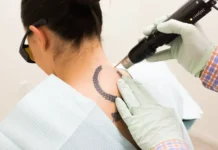The purpose of a skin infection depends on the type of infection.
Bacterial skin infection: This happens when bacteria enter the body within a break in the skin, such as a plate or a scratch. Getting a cut or scratch doesn’t inevitably suggest you’ll develop a skin infection, but it does increase your risk if you have a decreased immune system.
A weakened immune system can be the result of an attack or the side effect of medication.
Viral skin infection: The most popular viruses come from one of three collections of viruses: poxvirus, human papillomavirus, and herpes virus.
Fungal infection: Body chemistry and lifestyle can enhance the chance of a fungal infection. For example, you may encounter multiple matches of athlete’s foot if you’re a runner or if you sweat a lot. Fungi often thrive in warm, moist environments. Wearing sweaty or moist clothes is a risk circumstance for skin infections. A break or reduction in the skin may provide bacteria to get into the following layers of the skin. For the skin treatment, few Top dermatology companies will provide medications which will work perfectly.
Parasitic skin infection: Tiny insects or organisms burrowing beneath your skin and producing eggs can cause a parasitic skin infection.
How is skin pollution diagnosed?
An excellent medical exam is the safest way to determine what is creating a skin infection. Frequently, doctors can identify the type of skin infection based on the condition and location.
Your doctor may inquire about your symptoms and carefully examine any bumps, rashes, or lesions. For example, ringworm often causes a distinct round, flaky rash. In other cases, a unit of skin cells can help your doctor determine the type of infection.
How is a skin infection treated?
Treatment depends on the condition of the infection and the severity. Some types of viral skin infections may develop on their own within days or weeks.
Bacterial infections are frequently treated with topical antibiotics utilized directly to the skin or with oral antibiotics. If the strain of bacteria is contrary to the treatment, treating the infection may want intravenous antibiotics inflicted in the hospital.
You can use over-the-counter antifungal showers and creams to treat a fungal skin infection. If your situation doesn’t improve, ask your doctor about prescription oral or topical creams. In addition, you can utilize medicated creams to your skin to treat parasitic skin infections. Your doctor may also suggest medications to decrease discomfort like anti-inflammatory drugs.
Outlook for a skin infection
The prognosis for a skin infection differs depending on the cause. Most types of bacterial infections react well to medications. Positive strains of bacteria, such as methicillin-resistant Staphylococcus aureus (MRSA), are resistant to conventional antibiotics and are more difficult to treat.
Skin infection prevention
There are many ways to decrease the uncertainties of developing a skin infection. Frequent hand wash is one of the greatest ways.
Skin infections can vary from moderate to severe. Make an appointment with your doctor if you have a skin ailment that’s causing discomfort. Your doctor will be capable to provide the essential treatment for improvement. Opt contract research organization.



































































